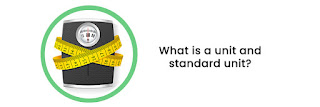Unit and Standard unit
The hectare is the standard unit of land measurement, with 1 hectare equaling 2.4 acres. Acres are a standard unit of measurement in India, so you might be perplexed if someone says, "Acre." However, the hectare is the standard unit of measurement for land in the international system of units.
The Metric System is the most prevalent and commonly used unit system. Here are some of the Metric system's standard and non-standard units of measurement:
For Capacity:
Millimetres (mm)
Centimetres (cm)
Metres (m) – This is the standard unit of length.
Kilometres (km)
For Time:
Seconds – This is the standard unit of time.
Minutes
Hours
Days/weeks/months/years
For Temperature:
Millilitres (ml)
Litres (l) – This is the standard unit of capacity.
For Weight/Mass:
Grams (gr)
Kilograms (kg) – This is the standard unit of weight in India.
Tonnes (t)
Newton (N) – This is the standard unit of weight per the International System of Units.
Length:
Degrees Celsius (C) – This is the commonly used unit for temperature in India.
Kelvin (K) – This is the standard unit of temperature per the International System of Units
Tag - Examples of standard units; Types of Units of measurements; Units of measurement list; standard units of measurement class 6; school online class; School-Live classes

Comments
Post a Comment
Thank you we will contact ASAP.